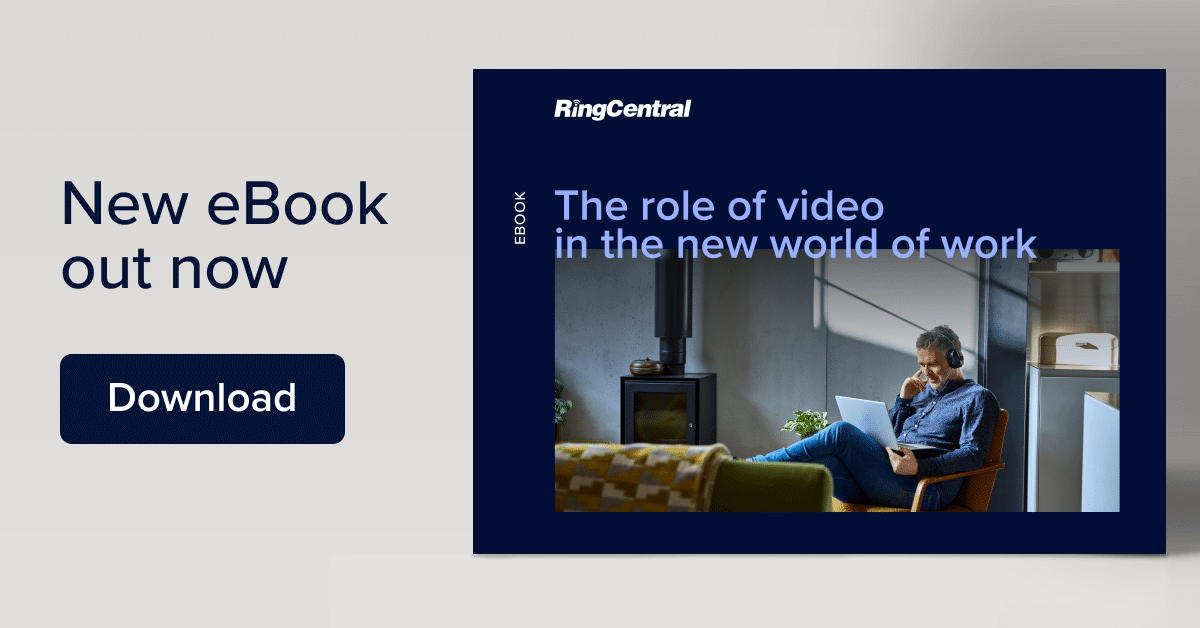Check out this video preview to see what the blog’s about:
A few weeks ago I had the opportunity to have breakfast with my first ever boss. This event usually happens twice per year when we are in each other’s hometowns and each meeting is a great time getting caught up on life, discussing various topics and recounting many stories.
One of the many topics we discussed was the way work has changed. Even more so now with the impact of the pandemic that has beset us. We shared our thoughts on the future of work and agreed that, to some extent, the way we worked has been changed forever. It was then he told me that his son just started a new job and managed to land this job without ever visiting the company’s headquarters and never meeting his new team or his new manager in-person.
Welcome to the new way of working powered by video technology.
While many are talking about video fatigue as a result of remote working, the reality is that video can and should be a powerful tool that companies use to recruit, screen and onboard new talent. If you are not yet using video to do so, here are a few ways that companies can use video as an advantage and ensure they are getting the most from the investment they are making in new hires.
Personalise it
Every company wants to hire top talent and this means more than just putting a job posting on job boards. If you really want to attract the best talent to your organisation you should be actively recruiting them. Video gives you a great opportunity to stand out. Even more so when you personalise the video.
By spending a few minutes on the target candidates’ LinkedIn profile, you can make a video that speaks to their strengths, lets them know how the role fits with their experience and speaks directly to the individual. This is far more powerful than an email that simply lets them know you are hiring. Video speaks to the person and enables a connection even before the first interview, use it to your advantage!
Be attentive
As someone who received their degree in communication and makes a fair part of my living by communicating, I am fascinated by non-verbal communication. Estimates vary widely on how much of our communication is non-verbal, but this University of Texas study estimates that 60-90 percent of our communication is non-verbal. This is where video provides a huge advantage.
Many candidates will look good on paper and can even perform well over the phone, but when conducting a video interview you can read the non-verbal queues from the individual. Be attentive to body language, watch their expressions, and their physical posture as they respond. These are all things that can provide insight into the candidate and let you know if their resume matches what you will be getting in an employee.

Build community
It is ironic to me that for years we have been socially distancing through our social media platforms and smartphone devices, yet now what so many crave is personal interaction and being a part of a community. Even though some offices have begun to open, the idea of remote work makes it increasingly difficult to have all employees together in one location.
As you onboard new employees, be sure to use video as a way to build a community and improve employee engagement. I learned of one such example from a colleague who told me his company held their three-day sales conference virtually. He told me they took the time to build in “personal sessions”.
These sessions were designed for employees to speak about their experiences working from home, share stories, and engage on a personal level rather than just a professional one. He told me that even though it was done on video, it was something that brought the team closer together and all “moving in the same direction”.
When using video, you can be creative in how it is done and it does not have to simply be a marathon session of PowerPoints. Your employees are human, use video to help bring that out in your onboarding and training.
Make it interactive
My son told me the story of his friend who had to attend the orientation for his university. Rather than sitting in front of his computer and watching a video for four hours, he made a cutout of himself, placed it in front of the camera and then went and watched a movie.
While this is not a recommended approach to solving the video exhaustion, it is a lesson to those using video to make it interactive. This is especially true when onboarding new employees.
I recently conducted a training for a client where I mixed in slides, Q&A, and a whiteboard. The majority of the training was the whiteboard and it involved me asking questions of the attendees and them providing answers that I would then write on the whiteboard. During the break, I sent them photos of the whiteboard, and then we would discuss what we had just developed. The training was a great success and was so because the training was interactive and engaging.
While there are platforms that enable you to build in forms, have polls, and annotate, you need to make sure you are engaging the audience rather than just speaking at them. You cannot expect employees to be engaged in an atmosphere that does not promote it.
The world of video in the workplace is here to stay and will only continue to advance in its capabilities. I believe how companies choose to use it in the recruitment, screening, and onboarding of new employees will be a difference-maker and ultimately a competitive advantage.
Let me know how you are using video today in your HR practices, I am always keen to hear new ideas.
Originally published Sep 24, 2020, updated Apr 10, 2023

